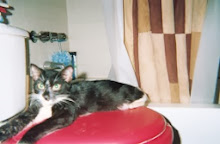 Title: Miss Timmins' School for Girls
Title: Miss Timmins' School for GirlsAuthor: Nayana Currimbhoy
ISBN: 978-0-06-199774-7
Pages: 512
Release Date: June 21, 2011
Publisher: Harper Paperbacks
Genre: Contemporary Fiction
Rating: 3.0 out of 5
Book Summary: A murder at a British boarding school in the hills of western India launches a young teacher on the journey of a lifetime.
In 1974, three weeks before her twenty-first birthday, Charulata Apte arrives at Miss Timmins’ School for Girls in Panchgani. Shy, sheltered, and running from a scandal that disgraced her Brahmin family, Charu finds herself teaching Shakespeare to rich Indian girls in a boarding school still run like an outpost of the British Empire. In this small, foreign universe, Charu is drawn to the charismatic teacher Moira Prince, who introduces her to pot-smoking hippies, rock ‘n’ roll, and freedoms she never knew existed.
Then one monsoon night, a body is found at the bottom of a cliff, and the ordered worlds of school and town are thrown into chaos. When Charu is implicated in the murder—a case three intrepid schoolgirls take it upon themselves to solve—Charu’s real education begins. A love story and a murder mystery, Miss Timmins’ School for Girls is, ultimately, a coming-of-age tale set against the turbulence of the 1970s as it played out in one small corner of India.
My Thoughts: I was one of those girls that liked school even as a teenager in high school. I didn't mind classes or the work but what I enjoyed the most was the social aspects of school. I loved spending time with friends, was always involved in extra-curricular activities and never wanted to miss a day! It seems fitting that I'm always attracted to books set in schools and with characters who are students or teachers. I also enjoy reading author debuts so Miss Timmins' School for Girls was an easy choice for me. Nayana Currimbhoy's writing is accessible and flows smoothly and her main character is terrific but an excess of characters and too many ideas and themes weighed this book down and reading it became a bit of a chore.
On arrival, Charulata Apte, a young Indian woman and inexperienced, new teacher at Miss Timmins' School for Girls is shy and reserved. It's the first time she's been away from home and her parents. As expected, Charu is nervous and a little anxious although leaving home to teach was her own idea. She wanted to go to Bombay, to be a 'Bombay girl', but her strict middle-class parents wouldn't permit it as they had no relatives living in Bombay. Panchgani, the site of Miss Timmins' Shool, is an 8-hour drive from Bombay and the closest Charu could get. And it’s preferable to continuing to live at home for Charu. By the end of the first chapter it's apparent there's more to Ms. Currimbhoy's main character than the good manners and quiet responses her strict upbringing instilled in her.
Charu is a very effective first-person narrator of her story. As I read, I felt like we were having a conversation, during which she relayed the story of her time at Miss Timmins. Like a conversation, topics jump around a bit and some issues come up but aren't totally fleshed out until several pages later but it worked for me. Charu is likeable and easy to identify with because, like most of us, she's a mixed bag of emotions and personality traits. If you cannot relate to her insecurity, you may understand the boredom she felt living with her mother and father for the first 20 years, and her desire to experience the world. In fact, Charu reminded me of some of the people I befriended my first year of college. Coming from strict homes and rigid upbringings, the freedom at school was exciting, shocking and frightening. For some it proved to be too much. Others went a little crazy and now have stories they may or may not tell their grandkids. Charu is smart and takes her time acclimating to Miss Timmins' School and the village of Panchgani, fighting occasional homesickness.
Ms. Currimbhoy has also made it easy for us to sympathize with her main character. Charu's father got himself into a bad situation in his job with the Navy when she was seven. This resulted in a scandal that brought shame on her family. Charu lost her best friend shortly before her family left Bombay for the anonymity of Indore. Her parents were tense, her mother cried but nobody ever talked about what happened. That's when Charu's "blot" appeared. "The family gash was closed up, unlicked, unmourned. And so it seeped into my face, red and angry.". Her blot became the size of an onion. Sometimes it was red and itchy, other times it was more subdued but it’s always present. As a result, Charu’s not only awkward and uncomfortable with new people but extremely vulnerable to kindness and friendship.
There are several teachers and staff happy to chat with and advise Charu about school policies and rules as well as Panchgani. The younger teachers, most of whom stay in Sunbeam, invite Charu for dinner one Friday night. The night goes so well the teachers decide to make it a weekly event. Then Charu meets Moira Prince, a young British teacher in the care of the principal, Miss Nelson. Moira lives in Sunbeam but doesn’t regularly socialize with the other teachers. Moira defends Charu when an obnoxious, self-righteous student tries to flout the detention Charu gave her. Soon Charu and Moira are spending most of their free time together. Moira is considered by many to be difficult and improper. In short, she is trouble but Charu can’t stay away.
Ms. Currimbhoy astutely conveys the struggle Charu experiences as she attempts to talk herself out of spending time with Moira. She knows what she should do, what her upbringing dictates The tension in the book is enhanced by the atmosphere surrounding the school. For example, Panchgani is known for its monsoon season and the intense rains and dark skies cause a bleak, foreboding feeling.
You might expect the book would continue to explore Charu, her relationship with Moira and where her life goes which sounds captivating to me. But that's not what happens, and I expect you'll probably be surprised when I tell you that at this point, part of the story is just getting started! One of the major themes in the book is introduced when Moira Prince is murdered not far from the grounds of Miss Timmins' School at a place called tableland. It sends the school into a state of chaos and shock despite Moira Prince not being at all popular.
Miss Timmins' School for Girls is divided into three books. Book One ends soon after the teacher's murder with Charu leaving the school because her mother is sick. In Book Two several new characters are introduced as four students set about investigating the murder. Book Two felt extraneous to me and unnecessary. I found the extra characters, the various theories about the crime and a few additional tangents about the lives of these characters confusing at times and tedious. I also kept wondering if we would see Charu again as well as what was the purpose of Book Two. I still haven’t figured that out to my satisfaction.
Charu reappears in Book Three. She’s at her mother’s family home because her mother is ill. Unfortunately, Book Three introduces several more new characters, members of Charu’s family and, inexplicably, many chapters are spent discussing them. By the time Charu returns to Miss Timmins’ School, I'd lost my steam and interest.
I wish Ms. Currimbhoy had written two books, maybe with the second book as a sequel. I liked her writing and some of her characters, including Charu were intriguing. There was just too much going on in this book. Charu’s growing into a woman, learning who she is and wants to be, coming to understand her parents and their relationship while exploring her own sexuality is a book I think I would have enjoyed very much. A book about a murder at Miss Timmins’ School for Girls and the subsequent investigation, by several different parties sounds intriguing, too. Unfortunately, although Miss Timmins’ School for Girls has some good aspects there were too many problems and the book just didn’t work for me.
Thank you to TLC Book Tours for the opportunity to read and review this book and to the publisher for a copy of Miss Timmins’ School for Girls.




































I'm less than halfway through so I skimmed this review -- I'll have to come back when I'm done to compare notes. 3/5 has me very curious!
ReplyDeleteI had a lot of the same feeling on this one as you did. I felt there were just an overabundance of characters, and I couldn't keep them all straight, or really care about them, for that matter. I also felt that too much of the book was focused on the murder, and it got old really quickly for me. There was a lot going on in this book, and I would have loved it had the murder plotline been settled, so we could move on to something else. I also didn't like the second portion of this book at all, and wondered why she chose to focus that section around the schoolgirls. Not a great read for me, I'm afraid.
ReplyDeleteI really enjoyed this one but had the opposite reaction - sometimes I wanted more to happen!
ReplyDeleteI love books set at boarding schools etc: A Separate Peace; Chatham School Affair and A secret History are favorites. This one sounds good, but may have to go on the long list.
ReplyDeleteI think it was Heather/Zibilee's review that expressed those same issues. In some books, there isn't enough going on, but this one has the opposite problem. I think that is probably all I need to hear to steer me clear of this one. Great review though!
ReplyDeleteI've read a couple other reviews that have said the same thing. It's too bad they didn't edit this better and make it two books.
ReplyDeleteYour review seems to agree with others that I have read of this one and that it is just "okay". It sounds like the book had so much promise but just meandered around too much and tried to be too ambitious.
ReplyDeleteDarn, it sounds like there was a lot of great things going on in this book - I'm sorry it didn't come together for you.
ReplyDeleteThanks for being on the tour.
I will try to read the book entitled Miss Timmins' School for Girls. I feel intrigue about the book because I graduated from a boarding school. I think this book I will enjoy reading.
ReplyDelete